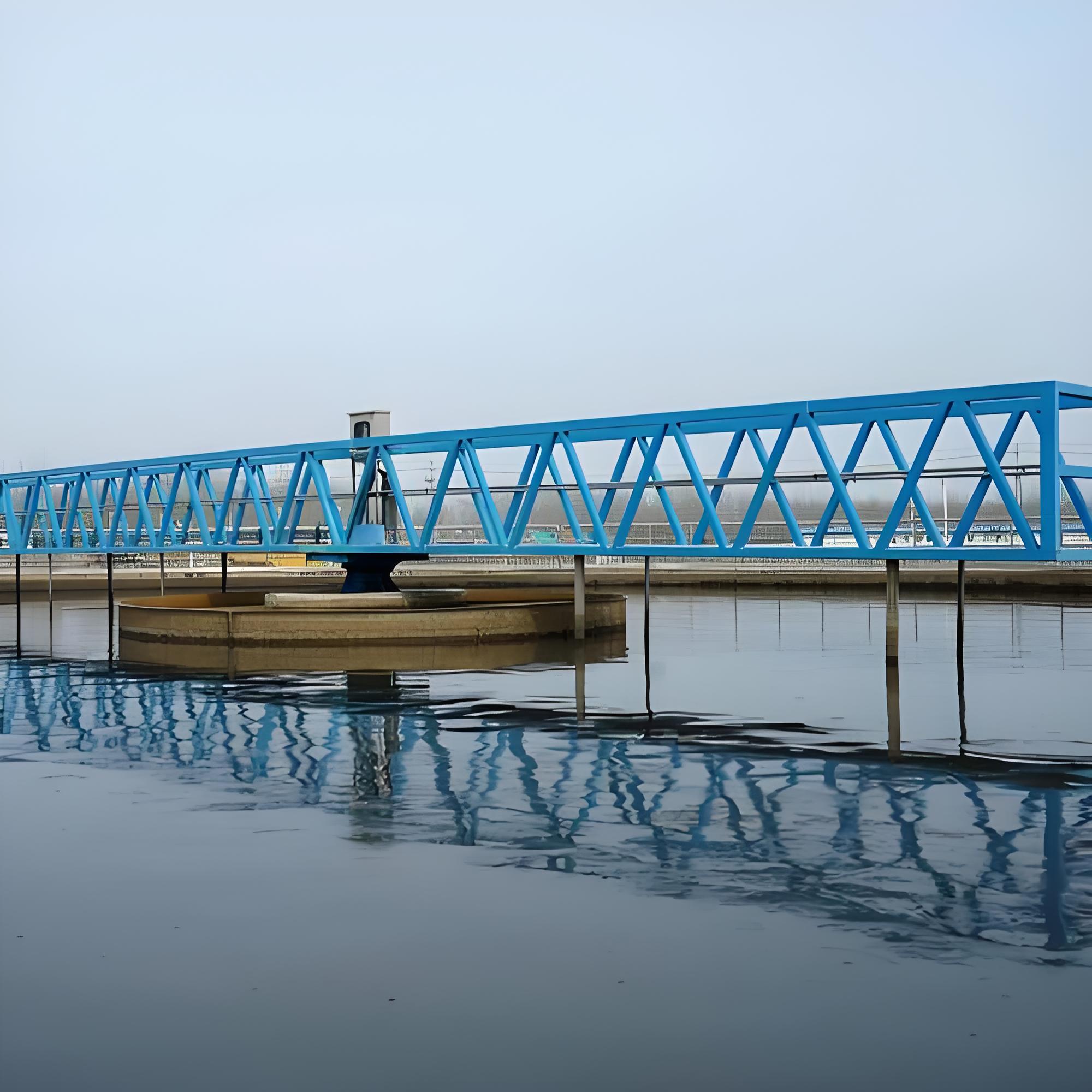
The central transmission scraper is the core equipment used for collecting sludge from circular sedimentation tanks in water treatment engineering. It mainly scrapes and collects settled sludge to the central discharge outlet through mechanical transmission.
1、 Core structure and working principle
Transmission system
Using a reducer to drive the vertical shaft to rotate (usually at a speed of 0.5-3 r/min), driving the scraper arm and scraper plate to move.
The transmission device is equipped with dual electrical and mechanical overload protection (such as safety shear pins), which automatically stops and alarms when the torque exceeds the standard.
Scraping component
The scraper plate adopts a combination of oblique stainless steel plate and bottom rubber lining plate to ensure that there is no residue in the scraper;
The bottom of the pool is designed with a 1:10 slope ratio, significantly reducing sludge resistance.
Workflow
The sewage is evenly distributed through the central stabilizing cylinder → suspended solids settle → the scraper pushes the sludge to the collection pit → it is discharged outside the pool using static water pressure or a pump (self-priming sludge discharge).
2、 Technical features
Efficient and compact: The central drive structure simplifies the transmission chain, suitable for small and medium-sized sedimentation tanks with a diameter of ≤ 18m (special designs can reach 30m);
Strong corrosion resistance: The underwater components are made of 304 stainless steel, and the main beam can be made of hot-dip galvanized square steel or poured with concrete;
Intelligent control: supports PLC remote monitoring to meet the needs of automation management;
Synchronous treatment of floating slag: Some models integrate floating slag scraper and slag collection hopper to achieve solid-liquid dual effect separation.
PREV: No more